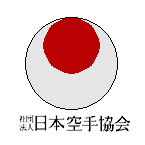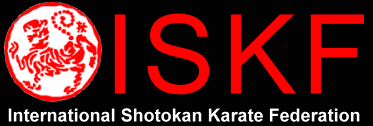

 |
Tulane Karate Club |
 |
|
JKA World Federation worldwide cooperation and communication among shotokan karateka (by T. Mikami, 2003) In 1986 the first Shotocup took place in Tokyo, a significant event that brought together JKA’s top instructors and competitors. In the ensuing Shotocups, high-ranking instructors discussed the ways for promoting worldwide cooperation and communication among shotokan karateka. The formation of a world federation was announced at the 1994 Shotocup in Philadelphia and the discussion continued in the 1996 Shotocup in Osaka, where JKA W/F’s first activities were initiated in promoting JKA international events and coordinating worldwide activities of shotokan karate. Through its functions there are several goals JKA W/F tries to achieve, the most important being the promotion of the martial-art aspects of karate. In JKA karate-do, tournaments constitute one of several essential tools for improving the karate level of the karate practitioners. In traditional karate the emphasis is on self-improvement through the process of continuous, lifelong training. The practitioners do not train merely for the purpose of winning tournament medals at their athletic peak, when they are of a young age, but rather for benefiting from the process of training even as they grow old. Karate has already spread throughout the world, and tournaments have largely contributed to this. It is the purpose of JKA W/F to promote long-term recognition of karate-do by the general public, by divulging and explaining the long-term benefits of lifelong training in promoting mental and physical discipline and health. In the step-by-step, scientifically developed method of training, the karateka strive to attain maximum efficiency of their energy when they perform karate techniques even as they grow older. This may be achieved through concentration during training and through persistence over a long time. The individual must have confidence in her/himself and integrity when she/he needs to face their shortcomings. Through consistent training, the karateka will increase their self-confidence and integrity, and will also use and develop courage and courtesy when they do partner work and sparring, as well as in performing for tests, demonstrations or competitions. Most importantly, to do all the above the individual must possess and use “spirit” in everyday training. To function properly, JKA W/F has an organizational structure that not only follows geographic divides, but also takes into account the resources JKA has in the various world areas. For the more effective communication and cooperation between countries there are five continental regions: Asia, Pan-America, Europe, Africa, and Middle East. Within these regions there are national organizations, and, depending on their size, the national organizations may in turn be divided into regions for large countries, or the clubs may communicate directly with the leadership of smaller national organizations. Activities of the JKA W/F include the review and development of technical standards, and the certification of ranks (dans), as well as credentials for instructors and officials. An equally vital role of the JKA W/F is to promote proper karate instruction in every place on earth where there are people keenly interested in learning shotokan karate. The spreading of true karate outside Japan was first accomplished by the JKA by sending several top instructors in the late 1950’s and the 1960’s to teach karate to the world. Whereas it may not be feasible to have a top instructor in every city or even in every country, even today top-level JKA instructors travel routinely to little-populated areas where shotokan practitioners exist and request such visits. Furthermore, JKA W/F provides the opportunity for cooperation and synergism between groups through exchanges of instructors and clinics, mutually organized meets etc. This happens at all levels, from continental regions that exchange visits between shihans (masters) all the way down to exchanges between clubs in close proximity. In this spirit, stronger regions can support weaker ones, while at the same time benefiting themselves. This can be illustrated by the hypothetical example of two similar small shotokan organizations, one of which is part of JKA while the other is not. When the head instructor of the former leaves, resigns, or retires from karate, that organization will probably not continue to exist, and even if it does survive, it will be disoriented and weakened. On the other hand, the small organization connected to JKA will continue to receive support from the larger organizations, in the form of top-instructor clinics, camps, certifications etc. At the same time the larger organization supporting the smaller one, will actually get stronger by doing so. This is just one example of how synergism works in the JKA W/F. |